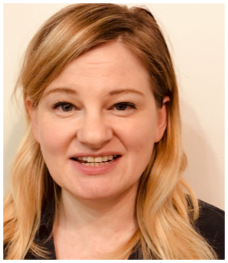English is evolving and one of the most noticeable trends in recent years is the move toward informality. Whether you're writing an email, introducing yourself, or even signing off a message, the level of formality is shifting, especially among younger speakers.
.jpg?width=450&height=352&name=iStock-1314544993%20(1).jpg)
Mirroring
A useful tactic when navigating this changing landscape is mirroring. This means copying the style of your correspondent. For example, if someone writes “Dear Mr Jones,” it's polite and appropriate to respond with the same level of formality. If they write “Dear Anne,” then “Dear John” might be your response.
|
Correspondent writes |
You write |
|
Dear Mr/Ms Laine, |
Dear Mr/Ms Jones, |
|
Dear Anne, |
Dear John, |
However, it’s worth noting that today many younger people skip titles and go straight to first names, even in a first interaction—starting with “Hi Anne,” instead of “Dear Ms Laine”.
Scaling down
This raises an important question: How do you start a relationship if the tone is uncertain? One helpful strategy is scaling down. Begin formally, such as “Dear Mr Smith,” and gradually reduce the formality over time—perhaps shifting to “Dear Tom” and then eventually “Hi Tom.” It’s much harder to do the opposite. If you start with “Hi Tom” and he replies with “Dear Mr Virtanen,” the mismatch can feel awkward.
E.g. Dear Mr/Ms Jones, => (friendliness) => Dear Sam,
Formality is fading
Formality is also fading in other areas. The use of contractions like don’t and won’t, once frowned upon in formal writing, is now widely accepted, even in business emails. Sign-offs are changing too, with “Thanks” and “Best” often replacing the more traditional “Best regards.” In vocabulary, informal English is more common—people now use phrases such as “call off” instead of “cancel,” using phrasal verbs rather than Latinate ones.
|
Formal => |
Informal |
|
Mr, Mrs (Titles) |
First name |
|
Dear |
Hi |
|
Best regards |
Best, Thanks |
|
Do not, will not |
Don’t, won’t |
|
Cancel (Latinate verbs) |
Call off (phrasal verbs) |
In short, yes — English is becoming more informal. But the key to good communication is flexibility. Start formally when in doubt, mirror your correspondent’s tone, and be ready to adapt. That way, you'll avoid awkwardness and build better professional and social relationships.
Contact Galimatias to learn more:




